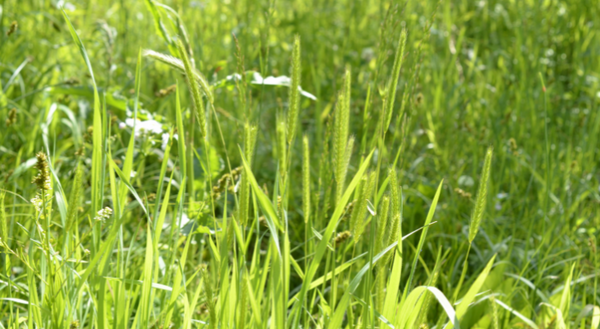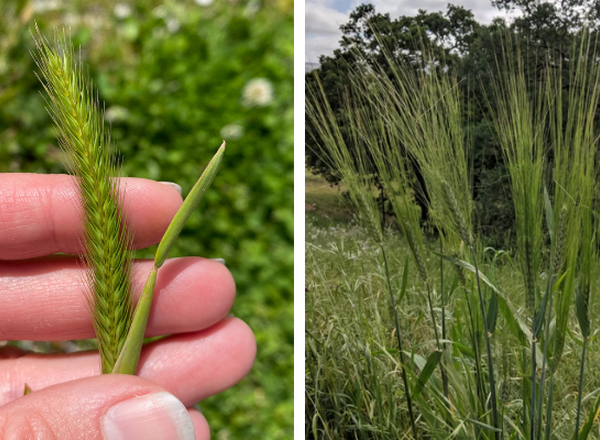
As someone who pays close attention to plants, weeding becomes an interesting chore. Instead of just looking for plants that are different than what I am trying to grow, I find it fun to identify all of them (and photograph them!). Talk about making a simple task more complicated!
While weeding a gravel path around some raised beds, I found Little Barley (Hordeum pusillum). This grass is a native species in Illinois and looks similar to cultivated barley (Hordeum vulgare). Because it likes to grow in disturbed areas it is not typically a desired grass. It is a spring annual, so by May is well into its flowering season.
Little Barley is a bunchgrass that stays around or under a foot tall. Compared to other grasses of that height, it has much broader leaves. The leaves themselves are rather short, less than about 2 inches long, and stay broad almost to the tip, where they become pointed. It has a very short membranous ligule that can be difficult to see.
When it flowers, Little Barley produces a spike inflorescence, with numerous awned spikelets densely arranged together. It resembles a barley seed head, but smaller and with shorter awns.
Have you seen Little Barley before? Look for it in disturbed areas.


Never miss a new post! Sign up for our email list.
ABOUT THE AUTHOR: Erin Garrett is a Natural Resources, Environment, and Energy Educator for University of Illinois Extension serving Alexander, Johnson, Massac, Pulaski, and Union counties. Erin develops and delivers high impact programming to adults and youth to help them develop an appreciation for natural resources and to empower them to make small changes to positively impact the environment. Erin’s programming focuses on why homeowners should consider choosing native plants, how to support native pollinators, how to identify grasses, how to identify and manage invasive species, and developing an appreciation for prairie ecosystems.
ABOUT THE BLOG: Grasses at a Glance dives into grass identification, focusing on tips and tricks that make grass identification possible. Get information about native and non-native species, how to tell look-alikes apart, and which grasses you can find in Illinois.